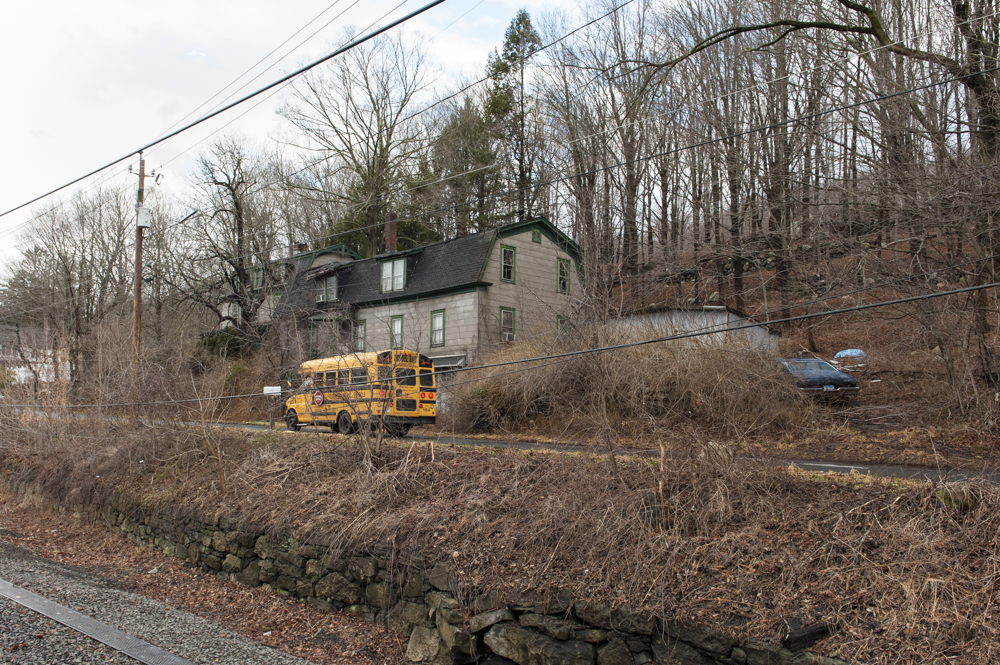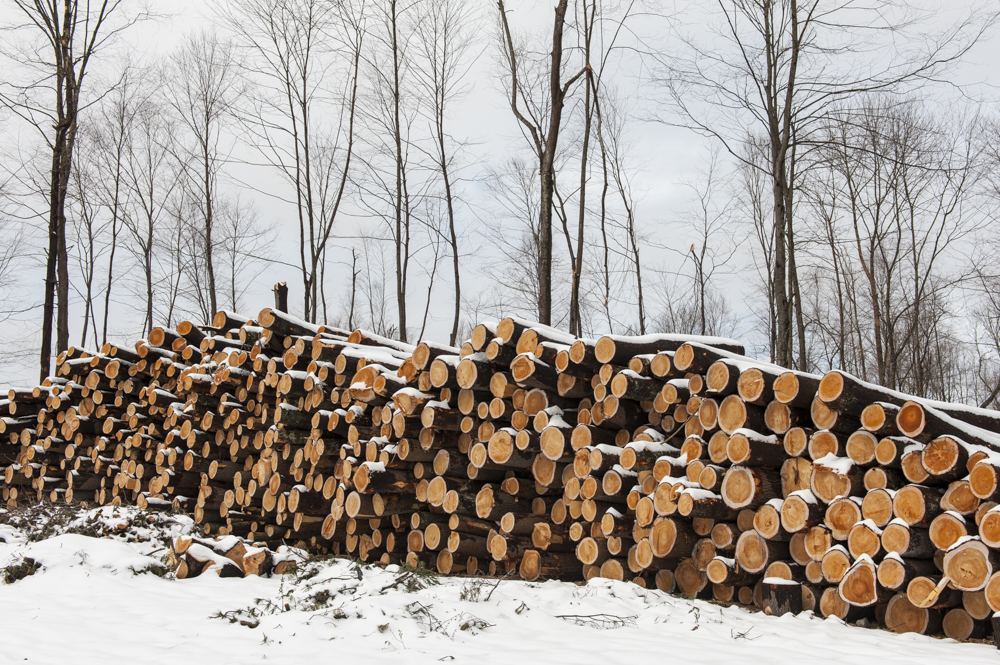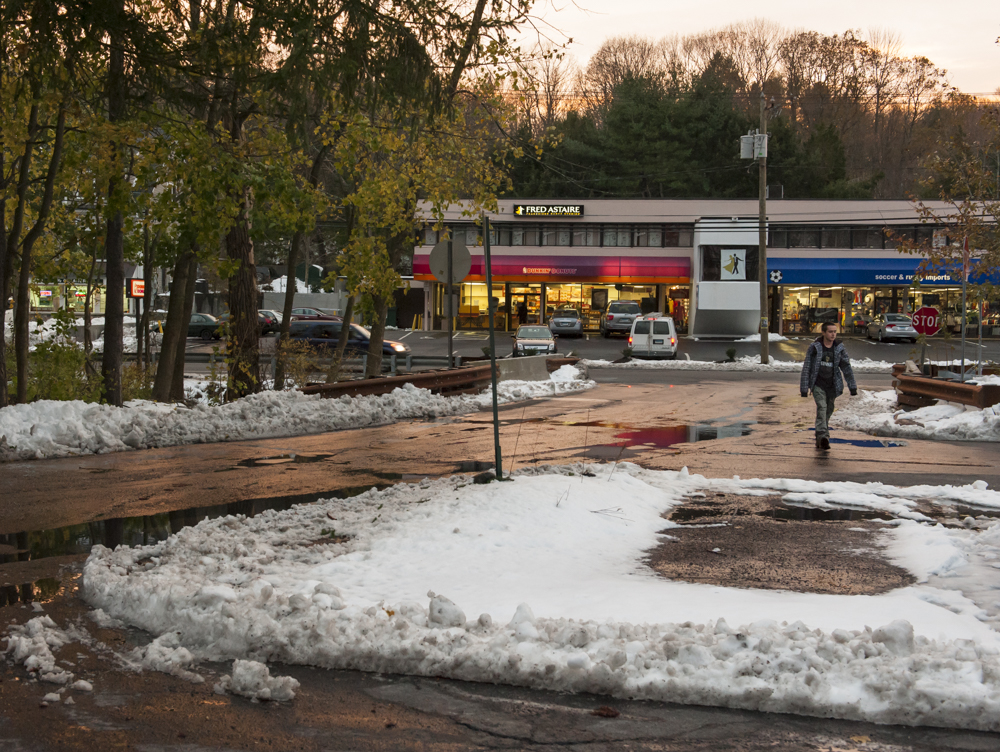Side Roads
“The texture of a field well plowed in spring is as beautiful as any fabric from the loom …
And except in the untouched wilderness the elements of any landscape are just what they
happen to be only because on that part of the earth men have acted just as they have.
The motive of their actions and their neglects may have been mainly economic, the pursuit
of three meals a day and shelter and clothing; but often there has been present, consciously
or unconsciously, some degree of regard for appearance...”
Frederick Law Olmsted
NOTES
In the nearly snowless winter of 2012 I made a photograph with the camera focused on tracks that were cut
into a muddy pasture road and frozen in place as the temperatures dropped in the late afternoon. The white
fences of the farm in the distance provided a reminder that at least on one level the tracks were simply part of
the daily chores necessary to operate a small dairy farm. The printed photograph first viewed later that evening
had more to say about the place and the people who work hard to care for their livestock and produce milk and
yogurt. The details of an exposed water line, the forms of the maple trees, and the shades of brown and gray in
the late winter light caught my attention and started me thinking. I came to realize that this image etched into that
winter landscape had something to say about the relationships between people and the place where they live.
The journey continued across open spaces and into crowded commercial centers in search of images that could
help explain how it is that people can shape and use, sometimes neglect, and finally make connections to the places
that they call home. We see built landscapes mostly covered with the furnishings of residents who come to rural
towns seeking refuge and solace while at the same time maintaining commuting distance to urban business and
cultural centers. We can, if we really look, find the remains of past generations of settlers who came to make a living
from the land initially with farms and then adding factories and mills. Diverse in content and seemingly disconnected
these images have that magical ability to tie together bits of history, touches of nostalgia, and our on-going
experiences in the here and now.
My instincts pull me away from the suburban homes and stores and lead me down any number of side roads looking
for places where people live against the grain of the consumer culture and bring imagination, creativity, and just a little
chaos into our otherwise homogenized lifestyles. I am looking slowly and repeatedly into the marginal and neglected
spaces, along the fringes, and in the seams where images are mined from the mundane details that go unnoticed by
busy inhabitants who are immersed in a daily life of making a living and raising kids. The days of searching are
sometimes rewarded with images that tell us that somewhere and somehow lives are lived with a sense of beauty
and innocence.
The images in Side Roads are from small towns in western Connecticut and bear the signs of New England history,
culture, and climate. These images are, however, not about a place but rather about relationships that develop
between people, places, and times. Iconic scenes of small town streets, homes, stores, and churches are not
represented. What we see are the factories and businesses that decline and turn into ruins only to be replaced by
the next wave of more invasive counterparts; the reservoirs that cover streams, and valleys, and even towns; and the
nature preserves and land trusts that are necessary to prevent the development of all of the fields, meadows, and
woodlands. At the same time we can see a vitality and enduring beauty in those places where man and the environment
seem to be at peace, and we can then begin to form ideas about how it is that some people make authentic connections
to places that are called home. Side Roads as a body of photographs draws on all of this visual diversity and celebrates
those places that speak to us with a sense of imagination, creativity, and just a little madness.



























